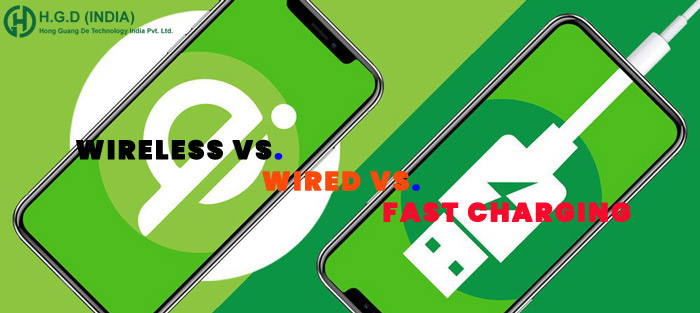WIRELESS VS. WIRED VS. FAST CHARGING

Newer Phones support wireless charging – and since the release of iOS 11.2 late last year, even faster wireless charging was enabled (with certain charging docks.) But how fast exactly is that, and how does it compare to regular charging speeds? Also – while we’re on the subject, what’s the best way to “fast charge” an iPhone or iPad?
This stuff can get confusing so let’s try to break down the facts about charging speeds.
WIRELESS CHARGING
This is a feature only available on iPhones 8, 8 Plus, and X. Just place the device on a compatible charging pad and it’ll start gaining juice. If you have iOS 11.2, there’s a 7.5W maximum for wireless charging. It’s 5W if you still have an earlier version of iOS. Either way, though, this type of charging can never be as efficient as a wired connection; 5W wireless doesn’t stack up to 5W wired.
WIRED CHARGING
All iPhones and all iPads can charge using any official Apple adapter without harming the device, so it’s safe to mix and match despite the chargers varying in power. Take a look at the small print on the adapter to see the wattage you’re dealing with. iPhones ship with 5W chargers while iPads come with 10W or 12W depending on the exact model.
Using a 5W charger on an iPad will result in extremely slow charge times, so it’s best avoiding that situation. Conversely, using a beefier charger with an iPhone should speed things up right? Not necessarily. Most models of iPhone cap the power intake at 5W, so although it’s safe to use a higher rated charger you won’t see any benefits.
FAST CHARGING
That said, more recent iPhones and iPads are capable of extremely fast charging if you have the right kit. The following six devices are compatible with “fast charging,” which can take an iPhone from 0% to 50% in just half an hour: iPhone 8, iPhone 8 Plus, iPhone X, iPad Pro 12.9-inch (1st gen), iPad Pro 12.9-inch (2nd gen), and iPad Pro 10.5-inch.
To fast charge you’ll need a USB-C to Lightning charger running at either 29W, 61W, or 79W. These are much chunkier than the regular adapters, and if you have a MacBook you likely have one of them already. You’ll just need to pick up a new cable with USB-C on one end and Lightning on the other.
WHICH IS FASTEST?
These findings show that investing in a fast charging setup will fill your battery to 50% twice as quickly as a regular wire, although the benefits are smaller over a two-hour cycle. Meanwhile, even the improved 7.5W wireless charging is still only about half the speed of the regular 5W charger that comes with all iPhones.
Wireless charging is still a great feature, but remember that it’s useful for its convenience rather than it’s speed. It’s perfect for overnight charging or long periods of inactivity, but if you need a quick top-up it’s always better to use a cable.